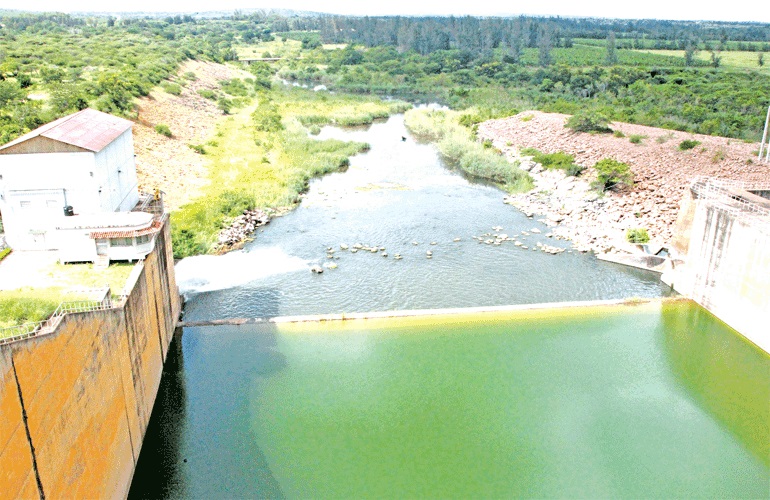Chapo lays the foundations for Mozambique's economic transformation with the support of youth
Greater Maputo: Rainy season crucial to replenish water reserve in Pequenos Libombos

Photo: Noticias
The amount of rain in the next rainy season will be decisive in increasing water reserves in the Pequenos Libombos dam in Maputo province, and ensuring regular supply to urban centres.
The National Directorate of Water Resources Management carefully monitors the situation of reservoirs in the south of the country, which are fed by rivers that saw low runoff during the 2019-2020 rainy season.
Between October and November last year, and January and February of the current year, for example, the provinces of Maputo, Gaza and Inhambane had normal to below normal rainfall.
Located on the Umbeluzi River, the Pequenos Libombos dam is currently only 28% full, down from 30% in March.
Water distribution to Maputo, Matola, the municipal village of Boane and the district of Marracuene has however remained regular, according to the national director of Water Resources Management.
Messias Macie explained that the water management has been cautious in order to avoid restrictions, as happened in the recent past.
In order to meet the water consumption needs of the Greater Maputo region, works is underway to increase the storage capacity of the Corumana dam in Moamba, Maputo province, which is currently 38% full.
“Six radial gates are being assembled. Works is 95% complete. The main [pipe] has been repaired and testing will begin shortly. We believe that this year it will be possible to transport water using the compact station that was built in Corumana,” he explained.
Unlike in the south, reservoirs in central and northern parts of the country have satisfactory water volumes. The Muda and Chicamba dams in Manica province are 94% and 86% full, respectively. In Tete province, the Cahora Bassa Hydroelectric Plant is at 92% storage. In the north, the Nampula, Chipembe and Nacala reservoirs are all at maximum capacity.












Leave a Reply
Be the First to Comment!
You must be logged in to post a comment.
You must be logged in to post a comment.